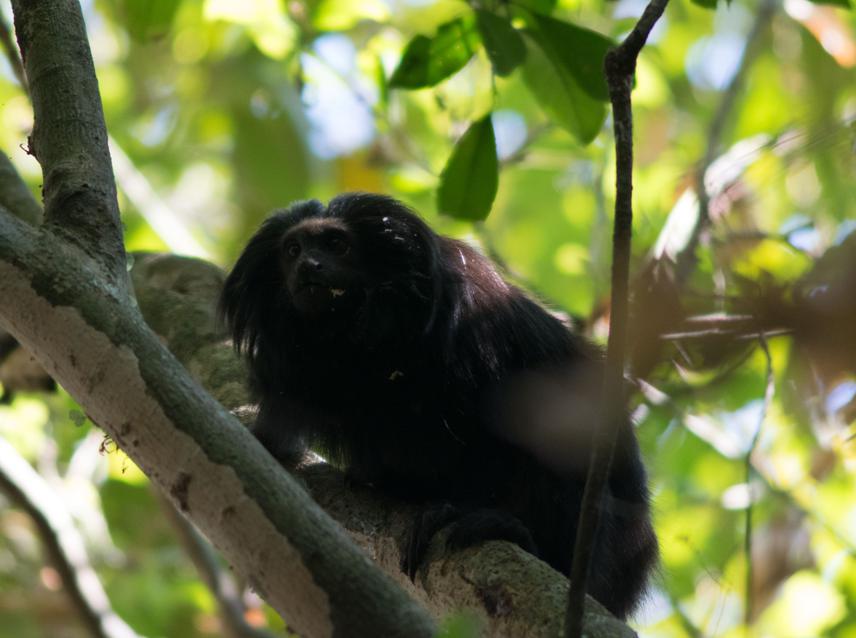Anne Sophie de Almeida e Silva
This project have three main approaches: to evaluate a possible functional redundancy of the black-lion-tamarin Leontopithecus chrysopygus (BLT) as seed disperser with other mammals and birds; characterize the primary dispersion performed by this species; and evaluate if the dispersion performed by the BLT is non-random, conferring better germination and recruitment success for the dispersed plants.

Black Lion Tamarin.
The project will be developed in two of the nine areas in which the species still persists in the state of São Paulo. The first area will be the Morro do Diabo State Park, that is a continuous forest of 33,800 ha located in the city of Teodoro Sampaio and the second area is a riparian forest of 1,600 ha in the Rio Claro Farm, which is located in the city of Lençóis Paulista.
The fieldwork will begin in October 2019 and will end in September 2020, covering 12 months, with an effort of at least 9 field days per month, resulting in 108 days in the field and 1,296 hours of sampling effort. During this period, the three groups of BLT will be followed up, from the begin of their daily activities to their return to the sleeping tree, in blocks of 3 consecutive days of sampling per month. So that I will be able to collect the different behaviours presented, the consumed and dispersed plant species, the pattern of defecation (distance of dispersion and spatial distribution of the seeds), and also, if and how the behaviour and movement pattern of the groups will influence the dispersal.
Alongside this, I will carry out experiments of germination and recruitment in the home range of the three groups, in order to test whether the dispersal performed by BLT is more advantageous to the plant species (better success of recruitment) than the random dispersal and the non-dispersal. Furthermore, I will create a database in the end of 2019, containing the species of birds and mammals that are present in each area (Morro do Diabo and Rio Claro Farm), using information available in the literature. This database will also contain information about frugivory, in which the rows will be the plant species, and the columns will be the animals. The idea is to test a possible functional redundancy of the BLT against other frugivores as disperser, which will be done a posteriori through a network analysis.